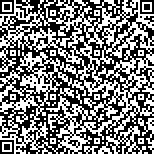| Quote
: |
向兴刚,刘晶晶,房江山,省格丽,胡晓灵,林琳,沈宝藩.基于数据挖掘的国医大师沈宝藩治疗高血压脑出血的方药规律研究[J].湖南中医药大学学报英文版,2023,43(6):1092-1097.[Click to copy
] |
|
| |
|
|
| This paper
:Browser 809times Download 607times |
| 基于数据挖掘的国医大师沈宝藩治疗高血压脑出血的方药规律研究 |
| 向兴刚,刘晶晶,房江山,省格丽,胡晓灵,林琳,沈宝藩 |
| (新疆维吾尔自治区中医医院, 新疆 乌鲁木齐 830002) |
| 摘要: |
| 目的 以国医大师沈宝藩临床处方数据为出发点,挖掘其治疗高血压脑出血(hypertensive intracerebral hemorrhage, HICH)的方药规律,为HICH的临床辨证施治提供参考。方法 收集沈宝藩教授 2021年1月至 2022年6月HICH的门诊、病房处方,采用SPSS 25.0、SPSS Modeler 18.0系统集成的频次统计、中药属性分析、聚类分析、复杂网络等数据挖掘方法,分析组方用药频次、药性、药对、核心处方等。结果 共纳入沈宝藩教授治疗HICH处方180首,共涉及中药93味,高频用药为牛膝、郁金、丹参、天麻、浙贝母、钩藤、陈皮、胆南星、远志、赤芍。药性以平、寒、微寒、温为主。药味以甘、苦、酸、辛为主。最常运用的药对为牛膝与郁金。运用熵系统相关算法挖掘出10个核心药物组合,拟出6个候选新方。其最常用治法包括活血通经、行气解郁、祛瘀止痛、息风止痉、理气化痰。结论 沈宝藩教授治疗HICH重用疏通气机、流畅气血、消其瘀滞、化痰通络之法,以痰瘀为核心病机,重用“痰瘀同治法”,“虚实兼顾”标本同治。为临床治疗HICH提供参考与借鉴。 |
| 关键词: 高血压脑出血|数据挖掘|方药规律|痰瘀同治|牛膝|郁金|丹参|沈宝藩 |
| DOI:10.3969/j.issn.1674-070X.2023.06.021 |
| Received:November 29, 2022 |
| 基金项目:国家中医药管理局“国医大师沈宝藩传承工作室”建设项目;新疆医科大学附属中医医院院级课题(2020MY03)。 |
|
| National TCM Practitioner SHEN Baofan's prescription and medication laws in treating hypertensive intracerebral hemorrhage based on data mining |
| XIANG Xinggang,LIU Jingjing,FANG Jiangshan,XING Geli,HU Xiaoling,LIN Lin,SHEN Baofan |
| (The Hospital of Chinese Medicine, Xinjiang Medical University, Urumqi, Xinjiang 830002, China) |
| Abstract: |
| Objective To analyze the prescription data of National TCM Practitioner SHEN Baofan, to explore his prescription and medication laws in the treatment of hypertensive intracerebral hemorrhage (HICH), and provide reference for the clinical treatment of HICH based on pattern differentiation. Methods The outpatient and ward prescriptions of Professor SHEN Baofan for HICH from January 2021 to June 2022 were collected using SPSS 25.0, and SPSS Modeler 18.0. The medication frequency, property, combination, and core formula were analyzed by data mining methods such as frequency statistics, Chinese medicines attribute analysis, cluster analysis, and complex networks. Results A total of 180 prescriptions for HICH by Professor SHEN Baofan were included, involving 93 Chinese medicines. The high-frequency medicines were Niuxi (Achyranthis Bidentatae radix), Yujin (Curcumae Radix), Danshen (Salvia Miltiorrhizae Radix et Rhizoma), Tianma (Gastrodiae Rhizoma), Zhebeimu (Fritillaria Thunbergii Bulbus), Gouteng (Uncariae Ramulus Cum Uncis), Chenpi (Citrus Reticulatae Pericarpium), Dannanxing (Arisaema Cum bile), Yuanzhi(Polygalae Radix), and Chishao (Paeonia Radix Rubra). The medicines were mainly mild, cold, slightly cold, and warm. They were mainly sweet, bitter, sour, and spicy. The most commonly used drug pairs were Niuxi (Achyranthis Bidentatae Radix) and Yujin (Curcumae Radix). Using entropy system correlation algorithms, 10 core drug combinations were mined and 6 candidate new formulas were proposed. The most commonly used methods include promoting blood circulation to unblock meridians, promoting qi to relieve stagnation, eliminating stasis to alleviate pain, calming the wind to stop spasms, and regulating qi to dissipate phlegm. Conclusion Professor SHEN Baofan treats HICH mainly by dredging qi, smoothing qi and blood, eliminating blood stasis, and resolving phlegm and collaterals. With phlegm and blood stasis as the core pathogenesis, Professor SHEN Baofan focuses on "treating both phlegm and blood stasis" and "treating both deficiency and excess", treating both the tip and root. This paper has provided reference for clinical treatment of HICH. |
| Key words: hypertensive intracerebral hemorrhage|data mining|prescription and medication laws|treating both phlegm and blood stasis|Niuxi (Achyranthis Bidentatae Radix)|Yujin (Curcumae Radix)|Danshen (Salvia Miltiorrhizae Radix et Rhizoma)|SHEN Baofan |
|

二维码(扫一下试试看!) |
|
|
|
|


